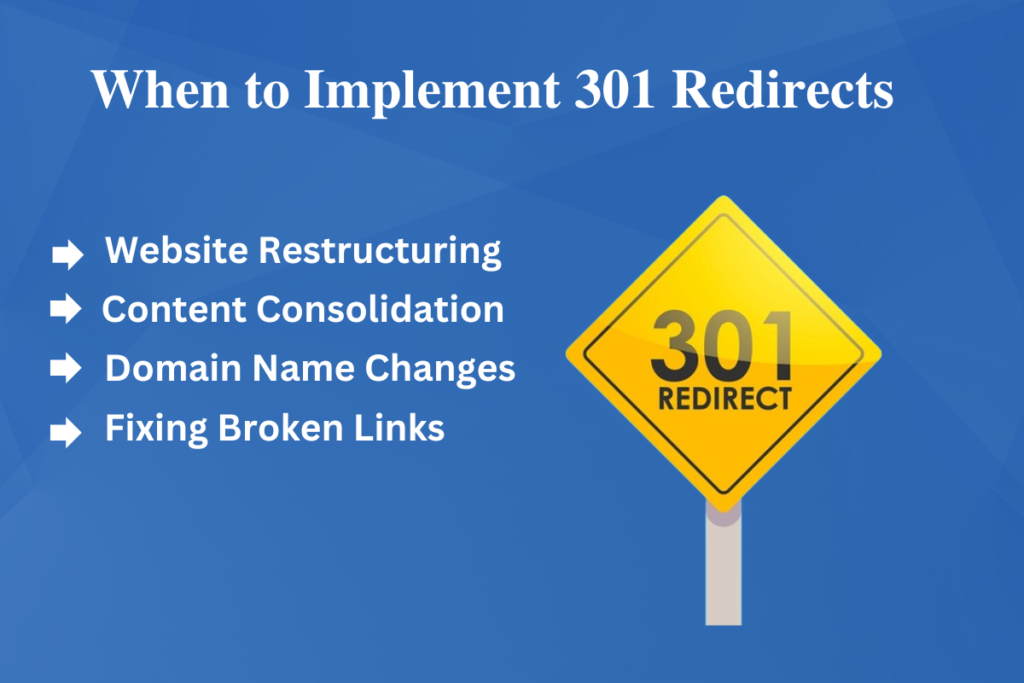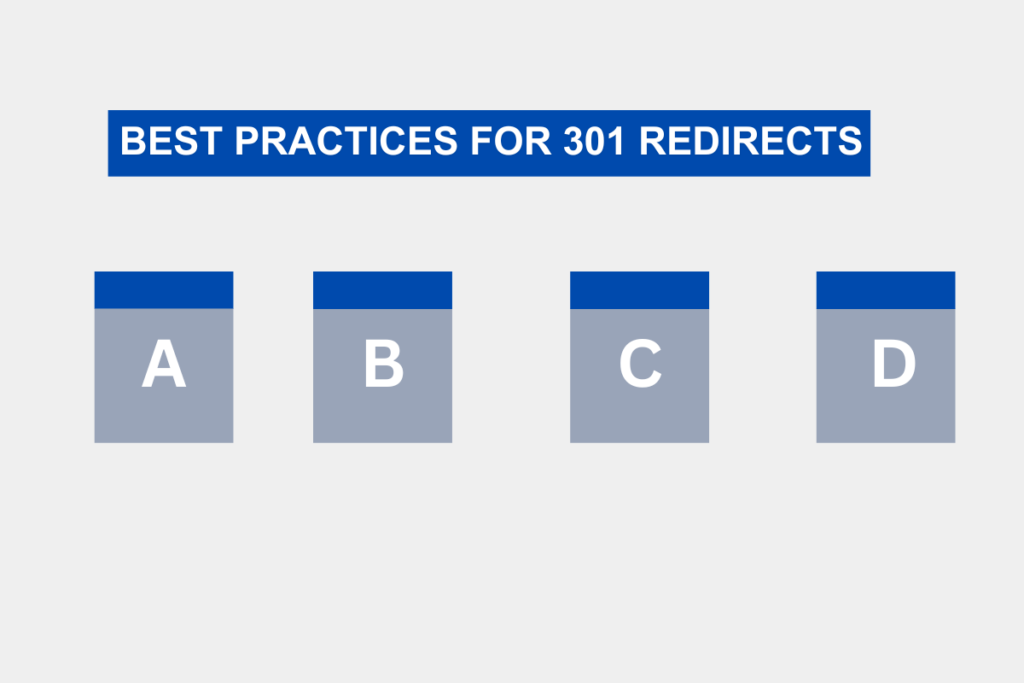In the realm of search engine optimization (SEO), one crucial tool that webmasters. And marketers often utilize is the 301 redirect. This simple yet powerful technique plays a significant role in maintaining website integrity. Preserving search engine rankings, and ensuring a seamless user experience.
In this blog, we will delve into what exactly a 301 redirect is, when and why it should be implemented. And its importance in enhancing SEO (Search Engine Optimization) Strategies.
What is a 301 Redirect?
The webmaster permanently moves a webpage to a new location, indicating it with a 301 redirect status code. Users or search engines try to access the old URL, they automatically get redirected to the new one without interruption, transparently guiding them to their destination.
When to Implement a 301 Redirect?

- Website Restructuring: When you restructure your website, whether you change the URL structure, merge pages, or migrate to a new domain, you must implement 301 redirects to ensure smooth transfer of traffic and link equity.
- Content Consolidation: If you have multiple pages with similar or duplicate content, it’s advisable to consolidate them into a single, authoritative page. By using 301 redirects to funnel traffic from the redundant pages to the primary one, you can avoid diluting your SEO efforts and improve user experience.
- Domain Name Changes: When rebranding or switching to a new domain name, implementing 301 redirects from the old domain to the new one helps preserve your search engine rankings and prevent organic traffic loss.
- Fixing Broken Links: If you encounter broken links on your website that lead to outdated or non-existent pages, setting up 301 redirects to relevant, active pages can prevent users from encountering 404 errors and improve overall site usability.
How to Implement a 301 Redirect?

| Implement a 301 Redirect | Description |
| Access Server Configuration | Locate and access your server’s configuration file, such as Apache’s .htaccess file or Nginx configuration file. |
| Identify Old and New URLs | Determine the old URL that needs redirection and the corresponding new destination URL. |
| Add Redirect Directive | Insert a Redirect 301 directive in the configuration file, specifying the old and new URLs for redirection. |
| Test the Redirect | Verify the functionality by attempting to access the old URL and confirming successful redirection to the new URL. |
| Update Internal Links | Review internal links within your website and update them to point to the new URL for consistency and optimal user experience. |
| Monitor Traffic and Rankings | Keep track of website traffic and search engine rankings to evaluate the impact of the redirect and ensure no negative effects on SEO. |
Why Should 301 Redirects be Implemented?

- Preserves SEO Value: By redirecting old URLs to new ones, you retain the SEO value accumulated by the original pages, including inbound links, authority, and keyword rankings. This helps maintain or even enhance your website’s visibility in search engine results pages (SERPs).
- Enhances User Experience: Instead of encountering dead ends or error pages, the system seamlessly redirects users to relevant content, improving their browsing experience and reducing bounce rates.
- Retains Link Equity: Redirecting old URLs ensures that the inbound links pointing to those pages continue to pass link equity to the new destination. This preserves the authority of your website and prevents loss of ranking power.
- Prevents Duplicate Content Issues: By consolidating duplicate pages and redirecting them to a single canonical URL, you mitigate the risk of duplicate content penalties from search engines, thereby improving the overall quality and relevance of your website.
Best Practices for 301 Redirects

Consistency in Redirect Mapping
When implementing 301 redirects, maintaining consistency in redirect mappings is crucial. Each redirection should point to the most relevant and equivalent page on the new website to avoid confusion and ensure a seamless user experience.
Regular Monitoring and Updates
To ensure the continued effectiveness of 301 redirects, website owners should regularly monitor their performance and update redirections as needed. Changes in website structure, content, or URL conventions may necessitate adjustments to existing redirects to maintain optimal functionality.
Correct Implementation:
Ensure the correct implementation of 301 redirects at the server level rather than relying solely on JavaScript or meta refresh tags. Server-level redirects are more reliable and efficient for search engine crawlers and users.
Prioritize High-Traffic Pages:
Focus on redirecting high-traffic pages first to minimize the impact on user experience and SEO rankings. Identify key pages through analytics data and prioritize their redirection to maintain traffic flow.
Read About: What is 302 redirect when and why should it be implemented?
Conclusion
301 redirects are indispensable tools in the arsenal of any SEO practitioner or website owner. By effectively implementing 301 redirects during website restructuring. And content consolidation, domain changes, and link maintenance. You can safeguard your website’s SEO value, enhance user experience, and maintain a strong online presence.
Understanding the importance of 301 redirects and incorporating them into your SEO strategy. Which can contribute significantly to the long-term success and visibility of your website.
FAQs:
Typically, search engines process 301 redirects fairly quickly. But it may take some time for the changes to be fully reflected in search results. Ranging from a few days to a few weeks.
No, 301 redirects are intended for permanent moves. For temporary redirects, such as during site maintenance or testing, you should use 302 redirects, which indicate a temporary move.
When implemented correctly, 301 redirects have minimal impact on website performance. However, excessive or misconfigured redirects can potentially slow down page load times, so it’s essential to use them judiciously.
You can use various online tools or website auditing software. To analyse your site’s redirects and ensure they are functioning as intended. Additionally, regularly monitoring your website’s analytics can help identify any issues with redirection and address them promptly.


